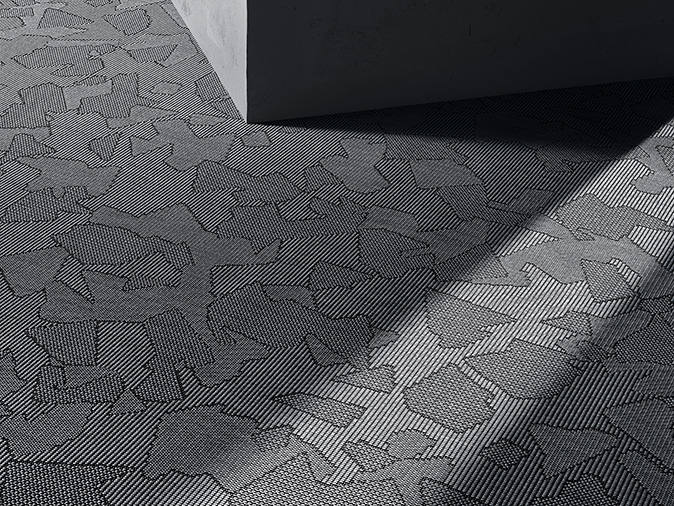#WOVEN
WOVEN CARPETS AS AN EXPRESSION OF EXCLUSIVE STYLE.
The weaving of carpets is the most qualitatively demanding and highest-quality processing method of fine yarns.
Weaving is one of the oldest craft activities of man. At least two thread systems, the warp threads and the weft threads, are crossed at right angles. The pre-tensioned warp threads form the support, the weft threads are successively drawn in from one selvedge to the other. The result is a woven fabric, a cloth, a carpet...
This basic principle has hardly changed over the millennia. Nevertheless, DAS TEPPICHWERK (formerly Vorwerk & Co. Teppichwerke) has been continuously developing the traditional craftsmanship for more than 140 years, setting groundbreaking accents with new techniques time and again. Today, as hundreds of years ago, weaving is the qualitatively most demanding and highest-quality method of processing carpets. Especially in the contract sector, woven carpets of the Vorwerk® brand are indispensable because of their enormous quality, durability and longevity.
1. Warp threads moving from the back to the front are lifted or lowered from the rest position and form a shed.
2. The weft insertion element (shuttle) conveys the weft thread through the shed
3. The reed attaches the weft thread to the already woven part.
4. The weft thread is tied off by changing the position of the warp threads.
=> Up to 50 linear metres per shift
DAS TEPPICHWERK has hit the big time in terms of design with the Fabula Exclusive 1015 flat weave. The extraordinary design has been awarded numerous prizes such as the internationally renowned Good Design Award, the German Design Award, the Iconic Award and also the A'Design Award.

Woven carpets do not just come in one look. Woven carpets can be produced as loop pile and velour.
Velour carpets:
- short pile, soft woven fabric in many different colours
- Designs possible by lifting out different coloured yarns
Loop carpets:
- firm, hard-wearing woven fabric in many different colours
- Designs can be created by inserting differently coloured play yarns and/or shiny yarns